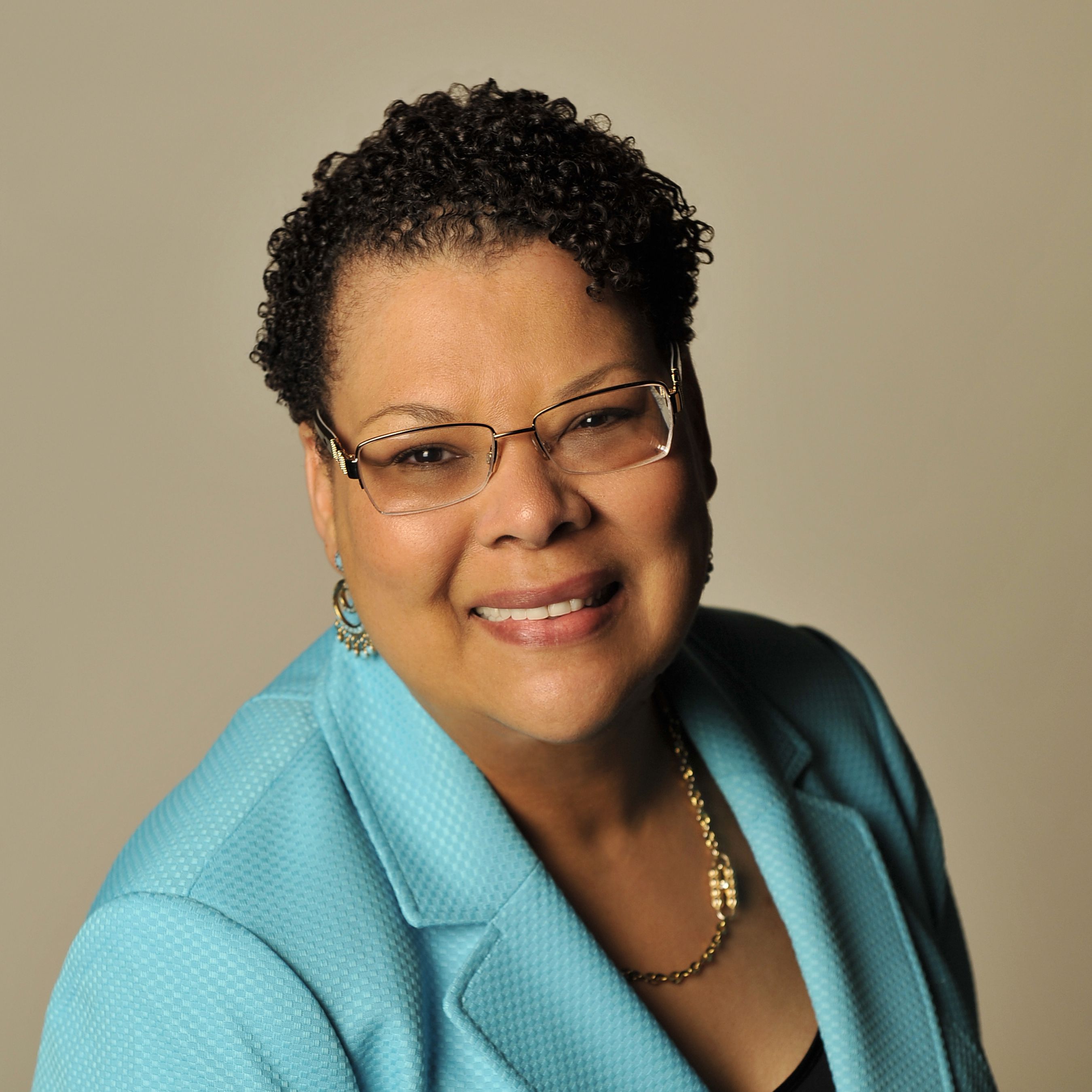Breaking the Cycle of Mass Incarceration: A Strategy for Investing in Individuals, Families and Communities
Written by Vivian D. Nixon, College and Community Fellowship; Susan Sturm, Columbia Law School and Center for Institutional and Social ChangeSo many people come out with so many good intentions. And every door is slammed on them… When you’re told no at the employment line, when you’re told no trying to get back to your family, or you’re told no because this community is unaccepting of you — you try to figure out where you belong. And for many, sometimes it becomes rough and you resort to that old stuff.
— College and Community Fellowship student
I can’t tell you how many formerly incarcerated people or poor people or people of color wouldn’t… invest a dollar to get $150 because you have to believe you’re going to be here at 65 to want to put away even a dollar for your future.
— Formerly incarcerated leader
During the past four decades, the U.S. prison population has quadrupled, reaching an incarceration rate of nearly one in one-hundred adults. Including those on parole and probation, 7 million people in America were under some form of criminal justice supervision in 2013. The country is experiencing not only mass incarceration but mass criminalization, with nearly 65 million criminal history records on file. The vast majority of these men and women are parents.1
Research and experience reveal the consequences of failing to invest in the lives and futures of people and communities affected by the criminal justice system. So many of the people who experience prison have grown up with narratives of low expectations, high risk, and public indifference to the struggles and traumas accompanying poverty. Many in these communities receive attention and resources only when they break the law, and not when and where they need it the most.
Financial well-being, or more importantly its absence, plays a role in this cycle of disinvestment and interaction with the criminal justice system. Affected individuals often live in communities where incarceration is commonplace and quality education is out of reach. Crushing challenges associated with poverty leave little hope for a future that includes a decent job, let alone college and career. Add to that the widespread practices of charging fees and fines, such as for parking tickets, which land people in jail when they are unable to pay. The subsequent stigma of incarceration amplifies barriers to decent employment, financial stability, and safety.
These patterns of disinvestment operate alongside a set of policies that have produced the highest rate of incarceration in the world, creating an unsustainable financial future for these individuals, their communities, and generations to come. Through our work, we have documented how education and social capital can break this cycle, reduce incarceration, and enable people closest to the problem to transform their lives and communities.
A Cycle of Poverty and Incarceration
Poverty is the largest driving force behind what the Children’s Defense Fund calls the “Cradle to Prison Pipeline.” Most of the individuals entering the criminal justice system are at a financial disadvantage; about 60 percent of intakes into the state and federal prison systems report annual incomes under $12,000. These low incomes reflect higher rates of unemployment and the unavailability of decent jobs for people who lack a college education.2 During the past four decades, most of the growth in lifetime risk of imprisonment was concentrated among men who had not been to college. For many of these men, prison has become a normal part of life. According to the National Research Council, among African American men born in the late 1970s and who dropped out of high school, 70 percent have served time in state or federal prison. For white and Latino men in the same cohort, the rates of imprisonment are 28 percent and 20 percent, respectively.3
Incarceration sharply curtails the economic prospects of individuals and the communities to which they return. In 2011, nearly 700,000 people were released from either a state or federal prison, and most faced a multitude of challenges on returning to “free” society. Parents with minor children may have accumulated years’ worth of child-support arrears or had their parental rights rescinded. With few assets besides the “gate money” provided at release (usually between $50 and $200), those who have been disconnected from friends and family face uncertain housing and homelessness.
Upon release from prison, returning citizens have few opportunities for work that will be satisfying and provide a living wage. The National Research Council reports that up to one-half of former prisoners remain jobless for up to a year after their release. Barriers to employment associated with having a criminal record include restrictions on licenses in certain professions and the loss of personal and professional contacts while incarcerated. People of color with a criminal record have a particularly difficult time finding a job, especially one that enables them to invest in their futures, in part because of the stigma that attaches to a record. Blacks without criminal histories experience job callback rates closely matching those of whites with a felony conviction.4 The National Research Council report suggests that “pervasive contact with the criminal justice system has consequences for racial stratification that extend well beyond individuals behind bars.”
Mass incarceration also has a significant impact on U.S. poverty rates. Had it not been for the dramatic rise in incarceration rates between 1980 and 2004, researchers estimate that the poverty rate would have fallen by about 2.8 percentage points, instead of dropping by only 0.3 percentage points.5 This translates into several million fewer people living in poverty.
Systems of Disinvestment Have Led to Increased Incarceration
Many people affected by the criminal justice system grew up in communities with schools and other public institutions that failed them. As states were dramatically increasing funding for corrections, they were simultaneously cutting or not raising funding for social and government services targeting poverty, such as public assistance, transportation, and education. State spending per prisoner is three times that per public school student, and prison costs exceed spending on higher education in some states.6 These patterns exemplify the pattern of disinvestment contributing to mass incarceration. Communities of color have borne the brunt of this emphasis on incarceration at the expense of education. Researchers have documented vastly disproportionate incarceration and criminalization of people of color, particularly black men.7 While people of color make up about 30 percent of the United States’ population, they account for more than 60 percent of those imprisoned. The Bureau of Justice Statistics estimates that one-third of male African-American children born in 2001 can expect to serve time in prison at some point in their lives, compared to 17.2 percent of Hispanics and 5.9 percent of whites; 5.6 percent of black women born in 2001 are likely to go to prison at some point in their lives, but only 0.9 percent of white women and 2.2 percent of Hispanic women.8
At the same time, disinvestment in education, particularly in low-income communities of color, has reduced social mobility and limited access to the social capital needed to revitalize those communities. Incarceration’s reach has now grown too big to ignore, with stratification researchers characterizing incarceration as a powerful engine of social inequality.9
Mass incarceration has, in the words of Todd Clear in Imprisoning Communities, “made disadvantaged communities worse.” Patrick Sharkey, in Stuck in Place, for example, links the high rates of incarceration with concentrated poverty and marginalization, racial stigmatization, and lack of investment and resources that are fundamental both for the positive development of children and the mobility of adults. The Justice Mapping Center has mapped the concentration of incarceration rates in disadvantaged communities all around the country: millions of dollars per neighborhood are spent to imprison residents of these communities.10
We Can Turn This Around: The Transformative Potential of Investing in Individuals, Families, and Communities
The struggles people face when returning home, including returning to the same context that led to prison, increase the chance that they will give up on the struggle to achieve long-term financial stability through lawful means. But a movement to reverse this tide has emerged. Driven largely by directly affected communities and supported by the contributions of the academic community, this movement links the need for fundamental reform of the criminal justice system with the need for change in the public policies that have underinvested in low-income communities of color and overinvested in the criminal justice system. These advocacy organizations and networks include the Education from the Inside Out Coalition, JustLeadershipUSA, and the New York Reentry Education Network. They are joined by a surprising convergence of public figures across the political spectrum, including Tony-winning composers, political conservatives, and President Obama.
Through this work, we have seen the transformative power of investing in people and communities. By investment, we mean both building financial stability and increasing capacity through education, social capital, and meaningful employment so people can provide adequately for themselves and their families.11 These forms of investment kindle hope among the formerly incarcerated (many of whom did not believe they even had a future) and enable positive contributions to families and communities. Providing resources, support, and capacity enables people affected by incarceration to invest in their futures and to become actively engaged in the effort to rebuild their communities.
Education is a key component of this investment strategy. Just as lack of educational opportunity increases the likelihood of poverty and incarceration, access to high-quality education plays a critical role in facilitating mobility. One study showed that almost all soon-to-be-released prisoners reported needing more education (94 percent) and job training (82 percent), while the need for a driver’s license (83 percent) ranked higher than the need for employment (80 percent).12 The link between lack of education and recidivism is strong. A bachelor’s degree reduces the likelihood of returning to prison to 5.6 percent, in contrast to 66 percent for those without a BA. For those with a master’s degree, the recidivism rate drops to less than 1 percent.13
Programs such as College and Community Fellowship (CCF) have proved successful in supporting the formerly incarcerated as they move along the path to higher education. CCF supports women affected by the criminal justice system in pursuing a college degree by enveloping them and their families in support services while they complete their degree. CCF was the first reentry-based organization to use postsecondary education as its core strategy for moving women out of marginalized subsistence and into mainstream society. In addition to achieving an extremely low recidivism rate, these programs give people a sense of hope, a belief in the future, and a willingness to invest in themselves, their families, and their communities.
Early in its history, CCF noticed that students needed to build their financial capability to succeed in college and beyond. They found that their students held many misconceptions about financial management and lacked confidence to control their financial lives. These insights triggered a series of efforts to help students address their financial needs.
CCF first introduced a student debt and financial aid counseling program and later added credit counseling services. In 2013, CCF joined The Financial Clinic’s New Ground Initiative, a capacity-building initiative that helps New York City reentry programs embed financial development in their services. The New Ground Initiative focuses on improving the lives of formerly incarcerated individuals through a combination of financial development strategies that help build financial security and improve financial mobility. The New Ground Initiative trained all counselors working with students at CCF to integrate “financial development” strategies into their conversations and build financial awareness and training into all services. The Financial Clinic’s approach invites all staff to begin with their own personal financial security as a way to build this capacity.
Financial training provides CCF’s students with the tools they need to make sound financial choices and build assets. In one year of the New Ground Initiative, CCF pulled credit reports for 100 percent of participants and organized debt for more than 150 participants, including student loan debt. CCF staff worked with program participants to address defaulted student loans, pay down credit card debt, and increase credit scores. CCF also sets goals with 100 percent of participants and works with them to open bank accounts and develop spending and savings plans. By embedding financial development into their existing services, CCF is better able to provide their students with the tools they need to succeed and ensure the sustainability of financial development practices as a central part of CCF’s service delivery model.
CCF’s work with students also uncovered an important advocacy issue. For-profit colleges were using predatory practices to target individuals with records. Deterring these practices is now part of The Financial Clinic’s policy agenda.
As we move into a more progressive bipartisan era of criminal justice policy, we must not relegate those who have been affected by criminal punishment to the economic margins. We must find ways to increase their chances of success by providing reintegration services that offer more than transitional housing, transitional employment, and stopgap medical services. We have the opportunity to embrace a public policy agenda that builds on the successes of programs like CCF.
The climate of public policy reform in the criminal justice sphere has taken on new energy in the past few years. An investment-oriented strategy would build postsecondary education and financial capability services into the design of reforms aimed at reducing incarceration and facilitating successful reintegration. Too often, reentry programs and policies aimed at providing a “second chance” have neglected education, particularly postsecondary education, as a core component of funding, program design, and accountability measures.
Building financial capability should also be a mainstay of criminal justice and educational initiatives. Promising policy directions include President Obama’s announcement in July 2015 of an Experimental Sites Initiative, restoring Pell grants for groups of incarcerated students around the country. This initiative was spurred, in part, by the leadership of the Education from the Inside Out Coalition, a national nonpartisan group advocating for access to higher education inside prisons. This kind of investment enables the United States to reduce incarceration and equip individuals, families, and communities with the tool to rebuild their lives and realize their potential.
NOTES
- For sources in this paragraph, see: Christy A. Visher and Jeremy Travis, “The Characteristics of Prisoners Returning Home and Effective Reentry Programs and Policies.” In The Oxford Handbook of Sentencing and Corrections, edited by Joan Petersilia and Kevin R. Reitz (New York: Oxford University Press, 2012); Michelle Natividad Rodriguez and Maurice Emsellem, 65 Million “Need Not Apply”: The Case for Reforming Criminal Background Checks. (New York: National Employment Law Project, March 2011); Hindelang Criminal Justice Research Center, Sourcebook of Criminal Justice Statistics (Albany, NY: University at Albany, 2010).
- Bureau of Justice Statistics, “Profile of Jail Inmates, 2002.” (Washington, DC: U.S. Department of Justice, October 2004); National Research Council, The Growth of Incarceration in the United States: Exploring Causes and Consequences, edited by Jeremy Travis, Bruce Western, and Steve Redburn (Washington, DC: National Academies Press, 2014), p. 128.
- National Research Council, The Growth of Incarceration in the United States.
- Devah Pager, Marked: Race, Crime, and Finding Work in an Era of Mass Incarceration (Chicago: University of Chicago Press, 2007); National Research Council, The Growth of Incarceration in the United States.
- Robert Defina and Lance Hannon. “The Impact of Mass Incarceration on Poverty,” Crime and Delinquency, 59 (2013): 562–586.
- Children’s Defense Fund, “America’s Cradle to Prison Pipeline.” (Washington, DC: Children’s Defense Fund, October 2007).
- Vivian Nixon, “Opening Remarks.” Address at New York Reentry Education Network Pathways of Possibility Conference, City University of New York, Baruch College, New York, NY. February 27, 2013.
- Bureau of Justice Statistics, “Special Report: Prevalence of Imprisonment in the U.S. Population, 1974–2001.” (Washington, DC: U.S. Department of Justice, August 2003).
- Bruce Western, Punishment and Inequality in America (New York: Russell Sage Foundation, 2006). p. 198.
- Spatial Information Design Lab, Million Dollar Blocks.
- Susan Sturm and Vivian Nixon, “Home Grown Social Capital: How Higher Education of Formerly Incarcerated Women Facilitates Family and Community Transformation.” (Aspen, CO: Aspen Institute, November 2015).
- Visher and Travis, “The Characteristics of Prisoners Returning Home.”
- College and Community Fellowship, Statistics.





